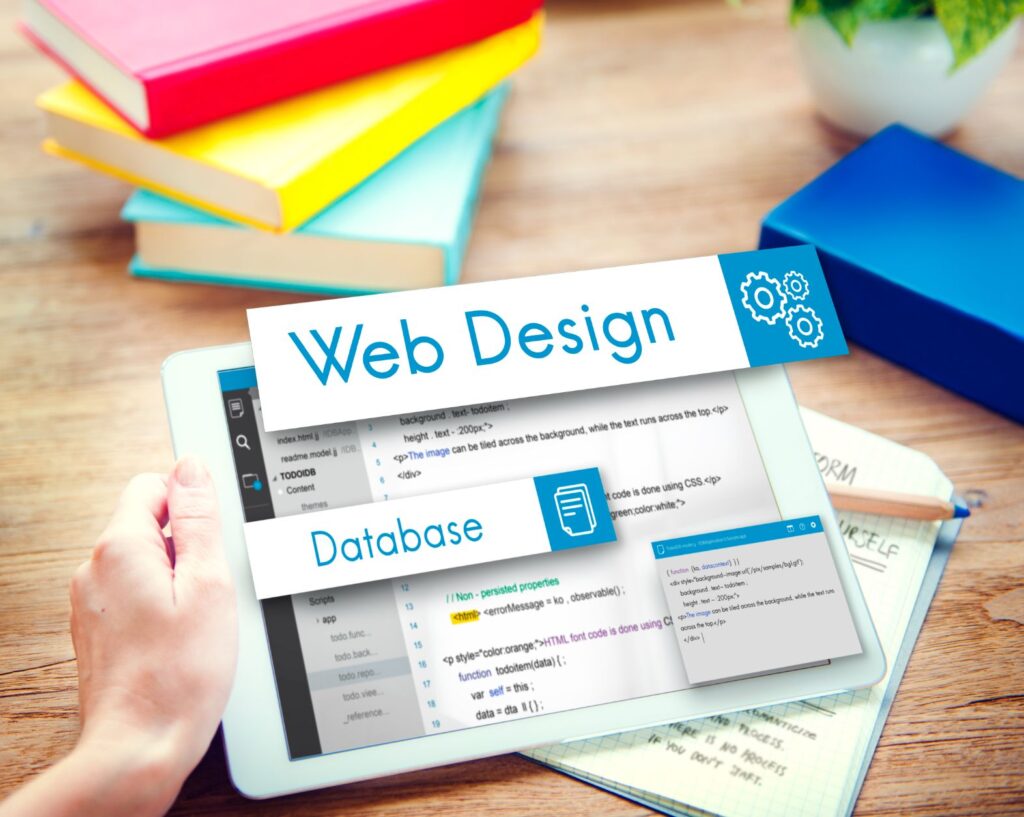- Free Estimates

With the internet as the primary gateway for businesses and individuals to connect with their target audiences, a well-designed website has become necessary. However, not all web designers possess the same level of expertise and professionalism. To ensure you make the right choice, it’s vital to watch for certain warning signs indicating a potential web designer’s limitations.
This guide explores ten red flags to watch out for when hiring a web designer.
● What is a Web Designer?
● 10 Red Flags to Avoid When Hiring a Web Designer
● Additional Considerations
● FAQs
➤ A robust portfolio is crucial in assessing a web designer’s capabilities.
➤ Effective communication ensures a smooth project flow.
➤ Beware of overpromising and the importance of realistic project scopes.
➤ Ensure the web designer has relevant experience to your project.
➤ A detailed contract is essential for a successful working relationship.
➤ Stay updated with current design trends and technologies.

Web designers are like the artists of the digital world. They are primarily responsible for how a website looks and feels. This includes choosing color schemes, designing layouts, and selecting fonts. They focus on creating an engaging and intuitive user experience. Their toolkit often includes graphic design software like Adobe Photoshop, and they possess skills in graphic design, color theory, and branding. A web designer aims to make a website visually appealing and user-friendly, ensuring it aligns with the brand’s aesthetic and appeals to the target audience.
Here are five key roles that are typically fulfilled by a web designer:
Web designers are primarily tasked with the visual aspect of a website. They select color schemes, graphics, and fonts, and design layouts. Utilizing design principles, they create visually appealing and strategically organized websites that align with a brand’s identity and objectives.
A significant part of a web designer’s role is ensuring the website is intuitive and user-friendly. They design the website’s structure and layout for easy navigation, focusing on creating a smooth and engaging user journey. This includes considering how users interact with the website and making necessary adjustments to enhance their experience.
Web designers must create responsive designs that adapt to various screen sizes, from desktops to smartphones. This ensures a consistent and accessible experience across all devices, which is crucial for usability and accessibility.
Web designers are responsible for encapsulating a brand’s identity within the website’s design. They translate a company’s branding elements—like color schemes, typography, and overall tone—into a digital format, ensuring that the website effectively communicates the brand’s message and ethos.
While web designers focus on a website’s front-end, aesthetic aspects, collaboration with web developers is often essential. They work together to ensure the visual design concepts are feasible and can be effectively implemented in the website’s back-end coding.
When hiring a web designer in Miami, FL, being aware of certain red flags can prevent future headaches and ensure that your website aligns with your vision and business goals.
Here’s a look at each red flag, their potential impact, and tips on how to bust them:
A portfolio is not just a collection of past works; it’s a critical showcase of a web designer’s experience, style, and versatility. A lack or absence of a portfolio is a major red flag, suggesting limited experience or skill diversity. When reviewing portfolios, look beyond aesthetics and assess their approach to user experience, problem-solving skills, and adaptability to different project requirements. A good tip is to ask the designer to walk you through a few portfolio projects, discussing the challenges faced and how they were addressed. This conversation can provide deep insights into their working style and problem-solving abilities.
Effective communication is key in the web design process. A web designer who is unresponsive, vague, or consistently misinterprets your needs can derail a project. During initial conversations, evaluate their communication style. Are they asking relevant questions? Do they understand and articulate your project needs effectively? A good practice is to set up a trial project or a small task before committing to a larger project. This approach allows you to gauge their communication skills and responsiveness in a real-world scenario.
Be cautious of web designers who promise the moon, especially within unrealistically short timelines or at suspiciously low costs. Overpromising often leads to under-delivering, resulting in frustration and a waste of resources. Request a detailed project plan including milestones and deliverables. Additionally, seek out second opinions or consult with peers to understand if the promises made are realistic. Experienced designers will set clear, realistic expectations and provide a transparent overview of what can be achieved within your budget and timeline.
Client testimonials and references speak volumes about a web designer’s reliability and quality of work. The absence of these could be a warning sign. To counter this, directly ask the designer for references and follow up with them. Inquire about the designer’s work ethic, adherence to deadlines, and response to feedback. Checking online reviews and ratings on independent platforms can also provide additional insights. A designer who is hesitant to provide references or whose references don’t seem genuine should be approached with caution.
While it’s important to consider budget, abnormally low pricing can indicate inexperience or substandard quality. This could lead to additional costs in the long run due to poor design or the need for redesigns. To avoid this, research average market rates for web design services and use this as a benchmark. Request detailed quotes from several designers to compare and understand what is included in their pricing. A reliable designer like Miami Website Design Professionals will offer a transparent pricing structure that reflects the quality and scope of their work.
Experience in your industry or with similar project types can be a crucial factor in the success of your web design project. A designer lacking this experience might not fully grasp your sector’s unique challenges and requirements. To verify their experience, ask for case studies or examples of similar projects they’ve completed. Discuss how they approached these projects and the outcomes achieved. A designer with relevant experience can provide detailed insights and demonstrate a clear understanding of your industry’s specific needs.
A clear contract is fundamental in defining the scope, deliverables, timeline, and payment terms of a project. Its absence or vague terms can lead to misunderstandings and unmet expectations. Ensure that you have a detailed contract in place before starting the project. If necessary, have it reviewed by a legal professional. The contract should clearly outline all aspects of the project, including confidentiality clauses, revision policies, and what happens in case of a dispute. A professional designer will insist on a contract, a sign of their commitment to transparency and accountability.
A web designer neglecting SEO and mobile optimization may not keep up with current trends and best practices. Ensure that your designer understands the importance of these elements. Ask them about their approach to SEO and mobile optimization. Check for examples of past projects where these aspects were effectively implemented. A competent designer will incorporate SEO and mobile-friendly design as standard practices.
Web design is a collaborative process, and flexibility is key. A designer who is not open to feedback or lacks adaptability can be problematic. During the hiring process, discuss how they handle feedback and revisions. Look for a web designer who values your input and is willing to work collaboratively to achieve the best outcome. An initial consultation or a trial task can also help you assess their willingness to incorporate feedback and adapt designs according to your preferences.
Staying current with the latest trends and technologies is crucial in web design. A designer using outdated methods may not deliver a modern, effective website. To check their knowledge and skills, ask about recent projects and how they incorporated the latest design trends and technologies. A good web designer will demonstrate a commitment to continuous learning and adapting to new advancements, ensuring your website will be aesthetically pleasing and functionally up-to-date.
By being vigilant about these red flags and knowing what to look for in a web designer in Miami, FL, you can make a more informed decision that leads to a successful and fulfilling web design project.

When hiring a web designer, it’s crucial to consider various factors that go beyond their basic design skills. These considerations can greatly impact the success and effectiveness of your web project.
 Workflow and Tools
Workflow and ToolsUnderstanding a web designer’s workflow and the tools they utilize can provide significant insights into how they will handle your project. Familiarity with the latest design software, content management systems, and coding practices is essential. This knowledge indicates their efficiency and ability to stay current with evolving web technologies.
 Company Culture Fit
Company Culture FitThe web designer’s approach and style should align with your company’s culture. This compatibility ensures a smoother working relationship and a better understanding of your brand values and objectives. A designer who resonates with your company’s ethos can translate your brand identity into web design more effectively.
 Project Management Skills
Project Management SkillsEffective project management is crucial for a web designer. These skills ensure that your project remains on track, within budget, and is delivered on time. Look for a designer who demonstrates clear communication, effective time management, and the ability to coordinate seamlessly with other team members or departments.
 Accessibility and Compliance
Accessibility and ComplianceWeb accessibility and compliance with standards like the Web Content Accessibility Guidelines (WCAG) and the Americans with Disabilities Act (ADA) are critical. A knowledgeable web designer like Miami Website Design Professionals will ensure your website is accessible to people with disabilities, broadening your audience and showcasing your commitment to inclusivity.
 Experience with E-commerce Platforms
Experience with E-commerce PlatformsA web designer’s experience with e-commerce platforms such as Shopify, Magento, or WooCommerce is invaluable for projects involving an online store. They should be skilled in creating user-friendly shopping experiences, integrating secure payment systems, and understanding the nuances of online retail.

A web designer primarily focuses on a website’s visual and user experience aspects. This role involves crafting the layout, selecting color schemes, and determining the overall aesthetic appeal of the site. They work on creating an engaging, intuitive interface that resonates with the target audience, often utilizing graphic design tools and principles to bring a visual concept to life.
In contrast, a web developer deals with the technical aspects of website creation, such as coding and programming. Their role is to take the design provided by the web designer and turn it into a fully functional website. This involves writing code in languages like HTML, CSS, and JavaScript for front-end development and potentially other languages like Python or PHP for back-end development. Web developers focus on the site’s functionality, performance, and security, ensuring that all interactive elements work correctly and that the site can handle the required data and traffic.
Choosing between hiring a local web designer in Miami, FL, and collaborating remotely depends on your preferences and project needs. Local designers offer the advantage of face-to-face meetings and a better understanding of the local market. However, remote designers can provide more options, potentially lower costs, and just as effective communication through digital means. The key is clear and consistent communication, regardless of the designer’s location.
The cost of hiring a web designer varies widely based on the project’s complexity, the designer’s experience, and geographic location. Simple website designs can start at a few hundred dollars, while more complex, custom designs can run into thousands. It’s important to get quotes from multiple designers and understand what’s included in their pricing.
The timeline for designing a website depends on its complexity, the number of pages, and specific functionality requirements. A basic website might take a few weeks, while a more complex site could take several months. Clear communication about timelines and regular progress updates are important for keeping the project on track.
This depends on how the website is built. If it’s created using a Content Management System (CMS) like WordPress, you can likely make basic updates yourself. However, you may need ongoing support from the web designer or developer for more complex changes or technical issues. Discuss and agree on post-launch support and maintenance before starting the project.
To start the project, you should provide the web designer with a clear brief outlining your objectives, target audience, preferred color schemes, examples of websites you like, and any content (text, images, etc.) that needs to be included. The more information you provide, the better they can meet your expectations.
Yes, it’s possible to build a quality website on a tight budget. Consider using website builders with pre-designed templates, which are cost-effective and user-friendly. Prioritize key functionalities and a clean design. However, remember that complex features or custom designs may require a larger budget.
Both aesthetics and functionality are vital for a successful website. A visually appealing design can attract and engage users, but functionality ensures a smooth and intuitive user experience. The key is to strike a balance – the website should look great and be easy to navigate and use.
Websites should be updated regularly to keep content fresh, address security concerns, and ensure compatibility with the latest technology. A full redesign is generally recommended every 2-3 years, depending on your industry and changes in web design trends. Regular updates and occasional redesigns keep your website relevant, secure, and competitive.
Knowing these ten red flags when hiring a web designer is essential for the success of your digital project. Making an informed choice can significantly impact your online presence and business growth. If you’re seeking top-notch expertise free from these red flags, Miami Website Design Professionals offers the best web design services in Miami, FL. Our commitment to quality and understanding of client needs to make them a reliable choice for anyone looking to create a compelling website.
Ready to create a stunning and effective website without the worry of red flags? Contact us at Miami Website Design Professionals for expert guidance and top-tier web design services. Let’s bring your digital vision to life!
FOLLOW US